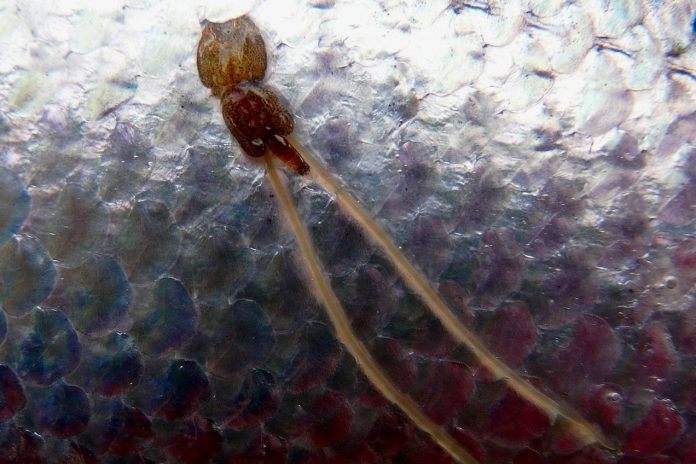The American pharmaceutical company doesn’t know when the product can be put into use in Norway.
“We are committed to following the existing regulatory process and must await NoMAs opinion before we can share more detailed information about the potential approval of this product. We continue to work in close collaboration with NoMA in order to be able to provide the salmon industry and farmers in Norway with relief from sea lice management for an extended period of time,” communications manager, Karin Gerbens told SalmonBusiness.
According to Gerbens, the treatment is administered in feed to fish in fresh water before they are transferred to sea. The product contains the active ingredient lufenuron, which belongs to the family of benzoylureas and inhibits the production of chitin – thereby interfering in the development of the louse’s exoskeleton, and preventing it from reaching its adult stage
Uplifting results in Chile
Gerbens said the company has achieved good results in Chile, where the drug was tested on Caligus rogercresseyi, the most common louse species impacting salmonid farms in Chile.
“These studies demonstrate that salmon treated with the medication remained below the Chilean industry regulatory threshold for an extended period of time, compared to the untreated group, which exceeded the threshold five times in the same period. Until May 2017, approximately 50 million fish had been treated with lufenuron in Chile, of which 37 percent achieved a period of 35.8 weeks from release to the need for the first bath treatment at sea.”
“Do you consider this a game changer?”
“Yes, we do. Sea lice are a significant challenge for salmon farmers, and this new breakthrough tool offers an innovative, safe, long-acting treatment alternative.”
Disputed
But so-called chitin synthesis inhibitors have been under critisism.
Earlier this year, a change was introduced in the Norwegian Aquaculture Regulations, whereby restrictions were imposed on their use. Following the change in the regulation, it is now forbidden to use chitin synthesis inhibitors at the same site until at least six months after the last treatment.
Gerbens denies that there are health risks associated with the product.
“No, there is no health risk with this product. The European Union has evaluated the safety of lufenuron establishing a maximum residue limit in finfish. This is the level of lufenuron that is permitted in fish at slaughter. The ‘withdrawal time’ is determined at the time of approval of the product and is applied to the label. As part of the standard regulatory process, the regulatory authority assess not only the safety of the product to the target species but also to the consumer in advance of granting a marketing authorization,” she concluded.


